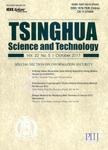Bidirectional Feedback Dynamic Particle Filter with Big Data for the Particle Degeneracy Problem
Bidirectional Feedback Dynamic Particle Filter with Big Data for the Particle Degeneracy Problem作者机构:College of Computer Science and Technology Nanjing University of Aeronautics and Astronautics Department of Computer Science Georgia State University
出 版 物:《Tsinghua Science and Technology》 (清华大学学报(自然科学版(英文版))
年 卷 期:2018年第23卷第4期
页 面:463-478页
核心收录:
学科分类:1305[艺术学-设计学(可授艺术学、工学学位)] 13[艺术学] 08[工学] 080203[工学-机械设计及理论] 081304[工学-建筑技术科学] 0802[工学-机械工程] 0813[工学-建筑学] 0825[工学-航空宇航科学与技术] 080201[工学-机械制造及其自动化]
基 金:supported by the State Basic Scientific Research of National Defense (No. c0420110005) 13th Five-Year Key Basic Research Project (No. JCKY2016206B001) the Six talent peaks project in Jiangsu Province (No. XXRJ-004)
主 题:big traffic data dynamic particle filter particle degeneracy particle impoverishment Dynamic Data-Driven Application System (DDDAS)
摘 要:Particle Filter (PF) is a data assimilation method to solve recursive state estimation problem which does not depend on the assumption of Gaussian noise, and is able to be applied for various systems even with non-linear and non-Gaussian noise. However, while applying PF in dynamic systems, PF undergoes particle degeneracy, sample impoverishment, and problems of high computational complexity. Rapidly developing sensing technologies are providing highly convenient availability of real-time big traffic data from the system under study like never before. Moreover, some sensors can even receive control commands to adjust their monitoring parameters. To address these problems, a bidirectional dynamic data-driven improvement framework for PF (B3DPF) is proposed. The B3DPF enhances feedback between the simulation model and the big traffic data collected by the sensors, which means the execution strategies (sensor data management, parameters used in the weight computation, resampling) of B3DPF can be optimized based on the simulation results and the types and dimensions of traffic data injected into B3DPF can be adjusted dynamically. The first experiment indicates that the B3DPF overcomes particle degeneracy and sample impoverishment problems and accurately estimates the state at a faster speed than the normal PF. More importantly, the new method has higher accuracy for multidimensional random systems. In the rest of experiments, the proposed framework is applied to estimate the traffic state on a real road network and obtains satisfactory results. More experiments can be designed to validate the universal properties of B3DPF.



